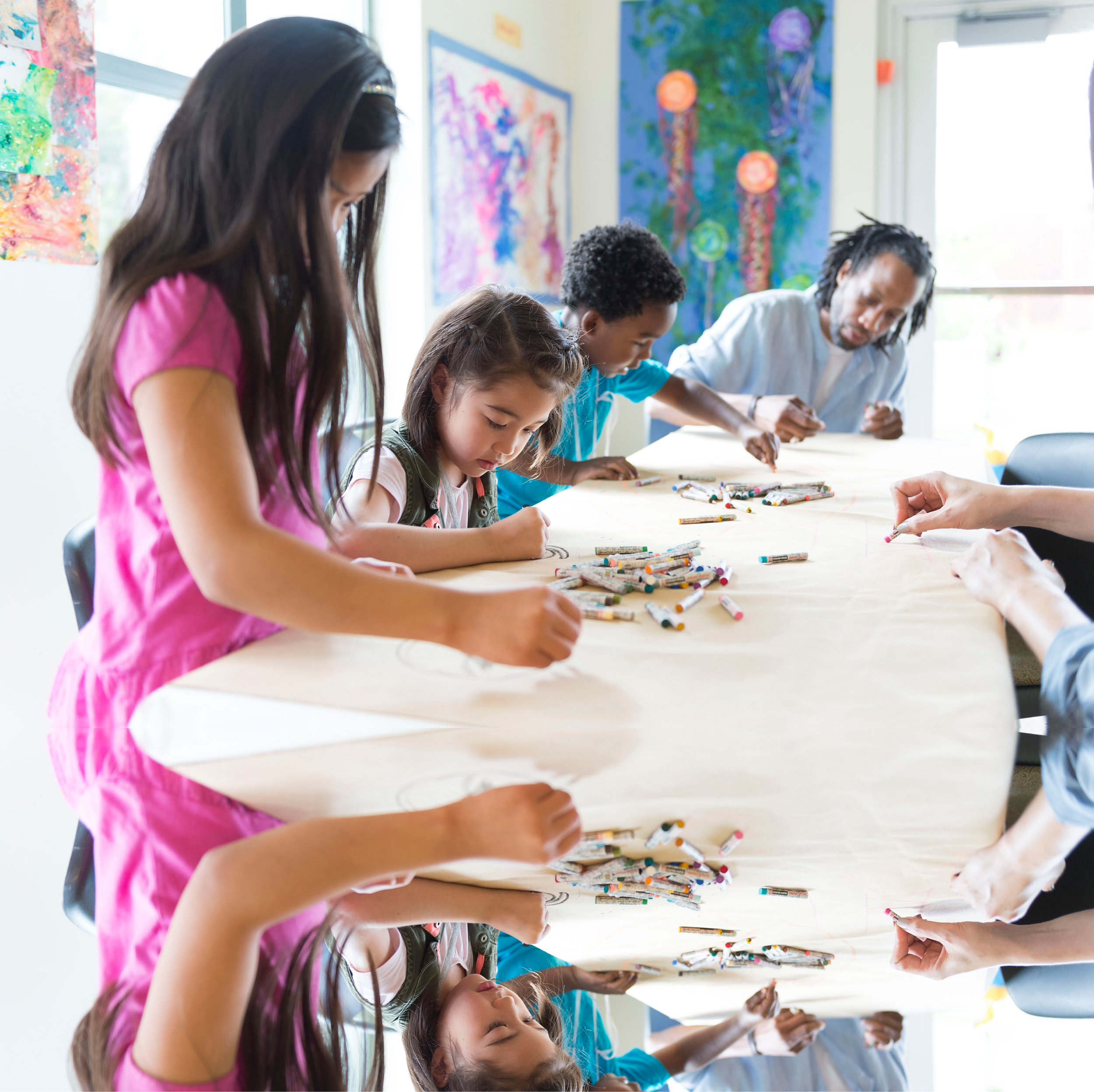

Art With Heart
Art With Heart
The non-profit Art with Heart taps into the healing power of creative expression to help improve kids’ lives. We designed a platform to broaden their reach.
Art With Heart’s creative expression curricula is thoughtfully designed to help kids overcome trauma and adversity, and help them learn about and express their emotions. For more than 20 years, teachers, counselors and therapists have worked with the group’s lesson plans 1:1 and in classrooms. The instructions and material currently exist as books and binders, limiting their availability. Art With Heart approached us with the vision of digitizing their activity plans and creating an online platform where educators and counselors could find these activities, thus broadening their reach, and impacting more lives. We spent 6 weeks leading them through a user-centered design process with multiple rounds of research and design, to create a vision for the platform and validate it with key audiences.
Project type User-centered design (UCD), envisioning & strategy.
Key tasks Stakeholder workshop, concept ideation, iterative UX design, prototyping, 2 rounds of evaluative research, concept prioritization, signature experiences, visual design, pitch deck.
Timeline 6 weeks
My role Design, research & strategy
We had a core team of 2 - myself and a junior visual designer, with the support of Blink’s Chief Creative Officer and Head of Design. My primary responsibilities were UX design, visual design & creative direction, prototyping, planning and conducting research sessions.
The Challenge
Creating an inspiring, easy to use platform that meets the needs of it’s time-crunched, resource-strapped users
Teachers and school counselors were identified as key audiences because of their ability to impact so many students. Time and access to art supplies were the two biggest challenges that surfaced through our research. Many of the existing activities were designed to be completed in 45 mins - 1 hr, but teachers often only had 15-20 blocks of time in which they could lead these activities. And in that time, they needed to at minimum explain the activity, get the students to do it, and then lead a follow-up discussion to reflect on what they had experienced. They also didn’t have much time to prepare for these activities and do things like creating a sample artwork. Many of them also had very limited art supplies and large classes, making it even more daunting. We took these challenges and ideated on how we could address them, creating concepts and signature experiences that take each into account.
Art With Heart’s current offerings
“I love the books but they’re so long and impossible to get through.”
- Study participant, school counselor
Key challenges
the Process
Learn, ideate, test, design, test, refine
As with most projects at Blink, we began with a bespoke stakeholder workshop, with activities designed to help us quickly understand the space, goals of the team and the needs of the core audience. We then invited some of the smartest, most creative people from across our company to contribute ideas for how we might solve for the biggest challenges. We created some low-fidelity mockups of our best ideas and conducted an early round of concept testing to get feedback from the core audience, test our assumptions and hypotheses, and to evaluate desirability. Once we had a full-fidelity prototype and more details built out, we did a second round of research. We then refined the designs again, and created a pitch deck that could be used to communicate the vision to the board and to investors.





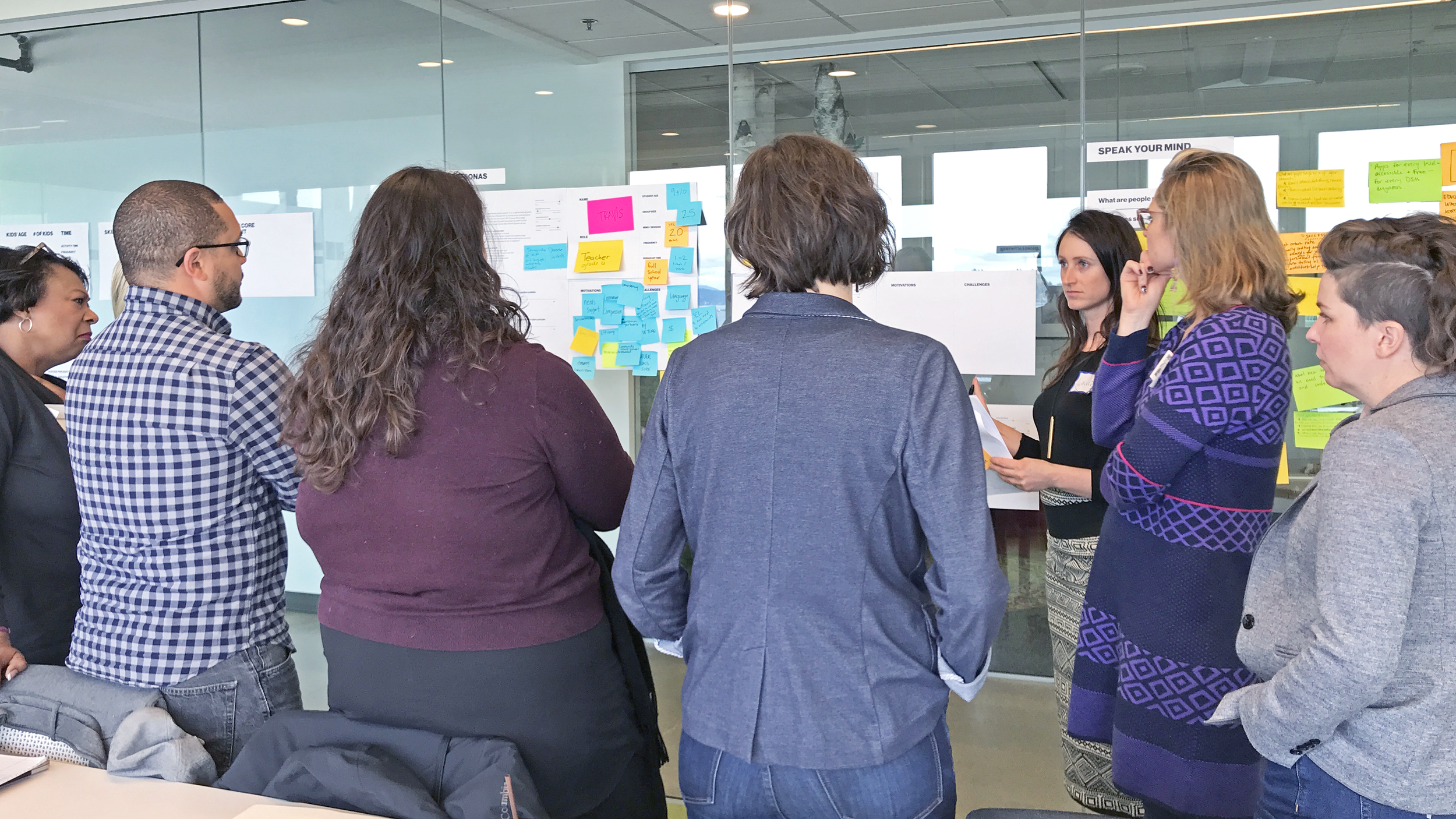




the Result
A BEAUTIFUL, personalized experience THAT addressed key needs AND tracks progress to make a measurable difference
The homepage: a taste of the magic
The homepage was created to inspire and to give visitors a window into the magic that they will have access to if they subscribe. It includes full access to several free sample activities as well as the ability to browse overviews for the full catalog.


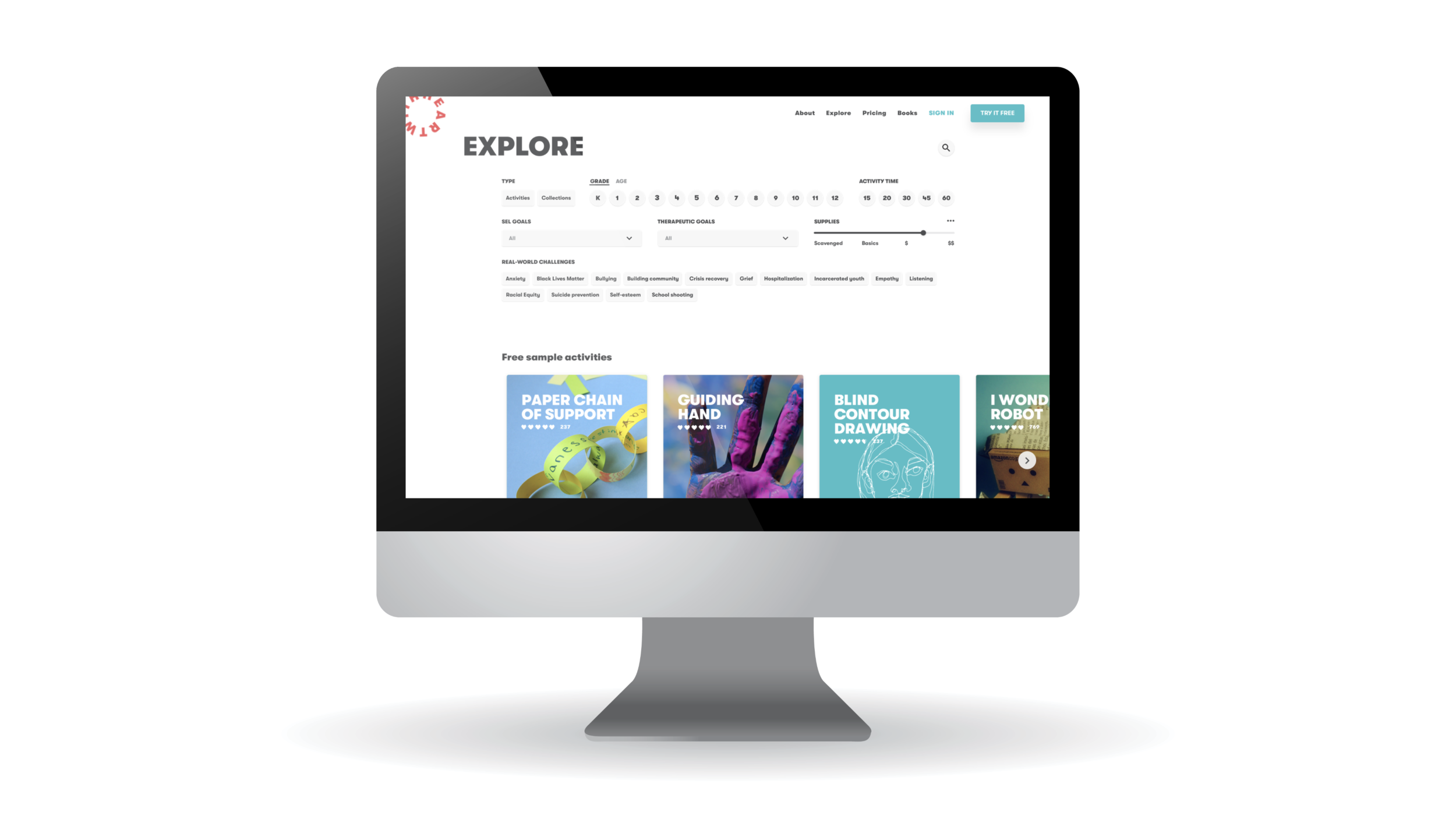




The activity page: the signature experience at the core of it all
The Activity experience emerged as the biggest delighter. The length of time needed to run an activity is fluid and the facilitator can choose between 3 time options. Small activities can be 15, 20 or 30 mins, medium can be 20, 30 or 45 mins and large activities are 30, 45 or 60 mins. Each activity is then broken into distinct blocks with the time needed for each. The activity facilitator can also choose between a physical or digital teaching method. If they choose to do it physically, they create a sample ahead of time and give a demo to their students. If they choose the digital version, they simply share the provided presentation which includes a video demo and slides for each additional step - such as the discuss after the art project.
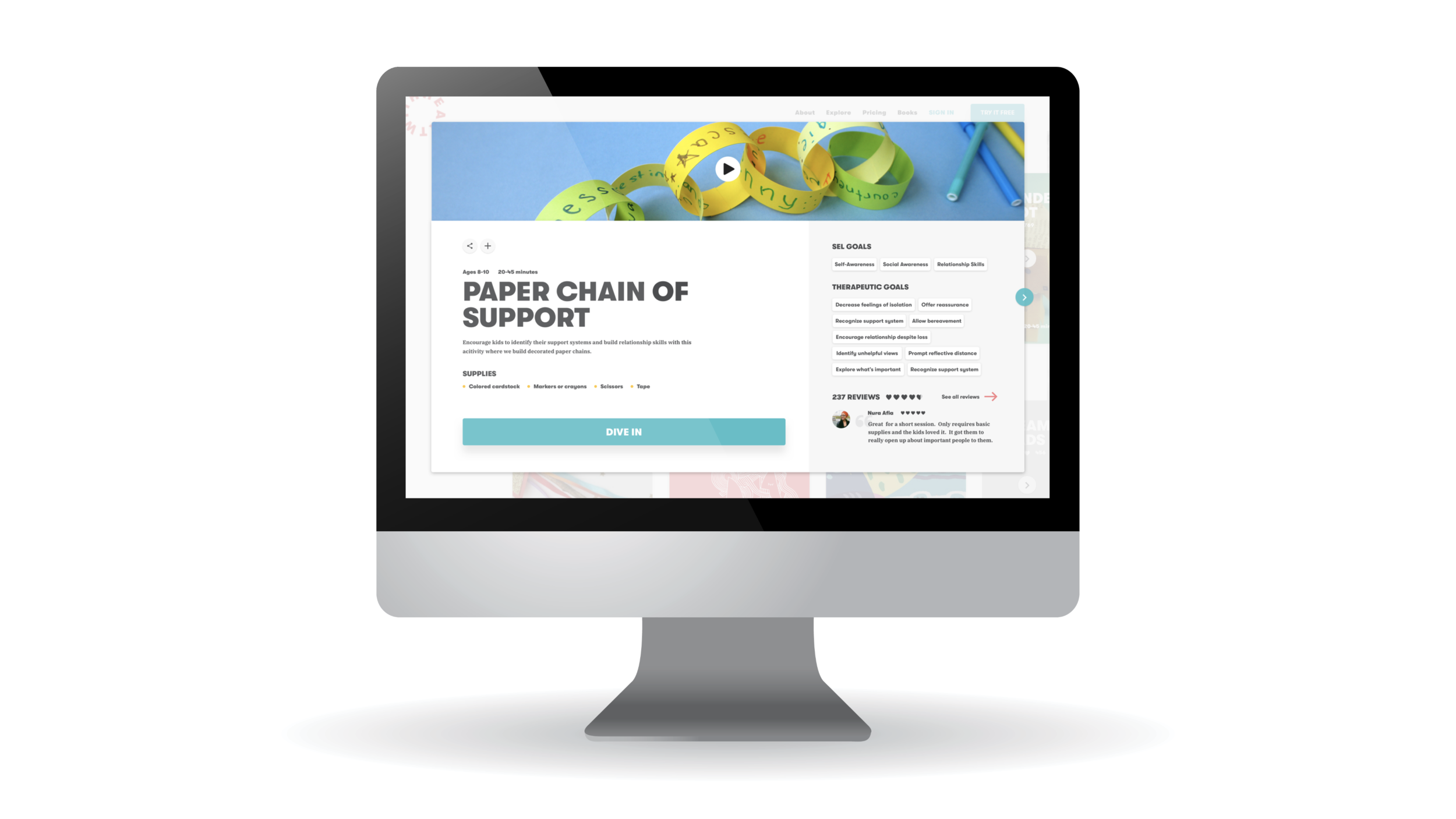












Your homebase: finding the right activities quickly
Personalized recommendations and a thoughtfully-designed set of filters are central to making it quick and easy to find the right activities. The platform features a lightweight and playful onboarding experience where members can provide some basic information including their student’s ages, length of time for activities, and access to supplies. Their homebase offers up a selection of activities that are perfect for their students, and they can adjust the filters including finding activities that make use of the art supplies they already have at hand. They can also find activities that are tied to recents events, such as school shootings, Black Lives Matter, and grief.





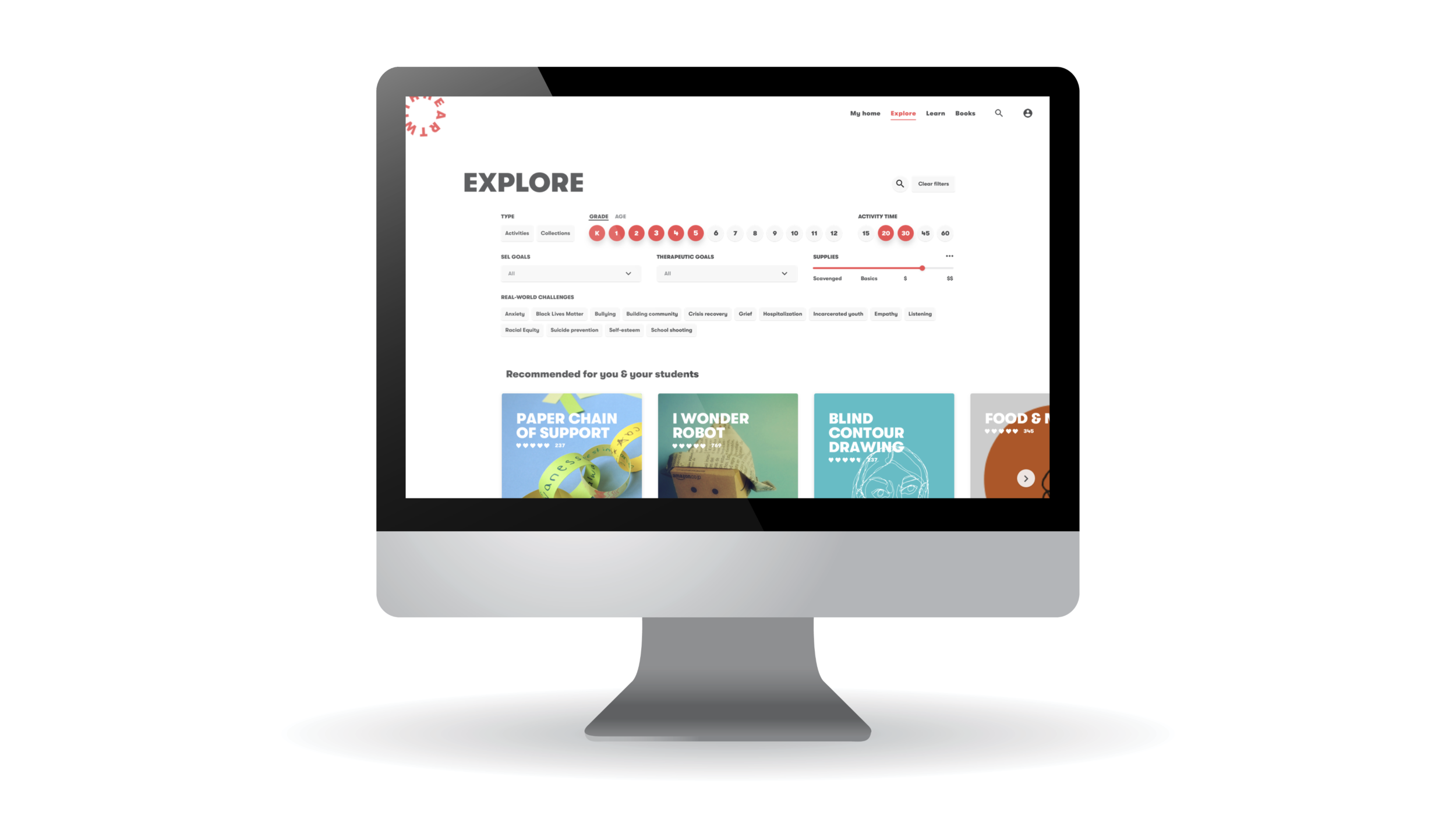



Curated curricula and activity planning: taking the friction out of planning
Members can create collections to prepare curricula for a class or ongoing program, or they can view and save collections curated by others including the Art With Heart team. During our research, we learned that many activity facilitators, such as elementary school teachers, often lead activities for multiple classes. In order to make it easy for them to plan and execute, the platform has a calendar where they can save & view activities for their different classes. On a given day, all they have to do is open the calendar and click into the planned activity.




Metrics dashboard: tracking real progress
Students can log into the portal, upload their creations and fill out a quick weekly survey. Teachers can then anonymously track the progress of the class on 3 core dimensions: 1 - understanding and expressing emotions 2 - feeling connected with the school/community 3 - having coping mechanisms to deal with feeling mad, sad, hurt or triggered.
“Art With Heart (the book-based program) was extremely helpful to some students I had with some pretty big heavy stuff going on last year. They really grew from it. If I could … offer that to my kids in addition to the counselor doing other things, it would make a world of difference.”
- Study participant, educator k-8
“It’s not only visually stimulating but there are really solid ideas that would be engaging to both teachers and students.”
- Study participant, educator k-8
“This is cool. This is easy, really straightforward and user friendly.”
- Study participant, 4th grade teacher


